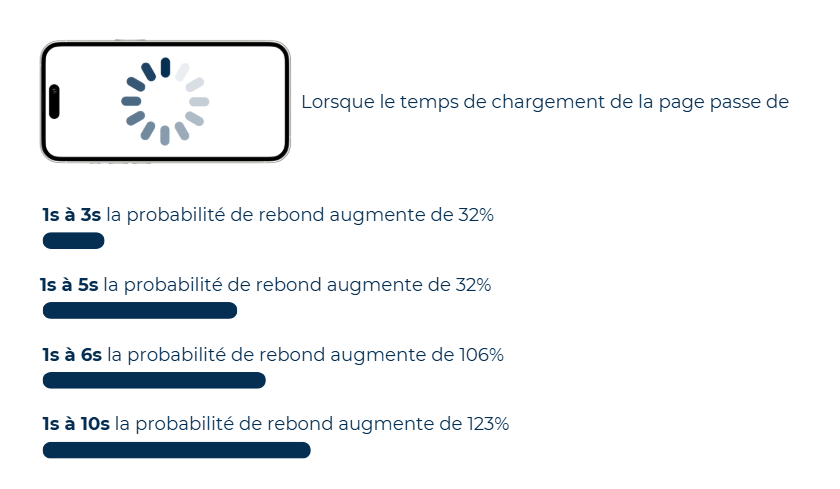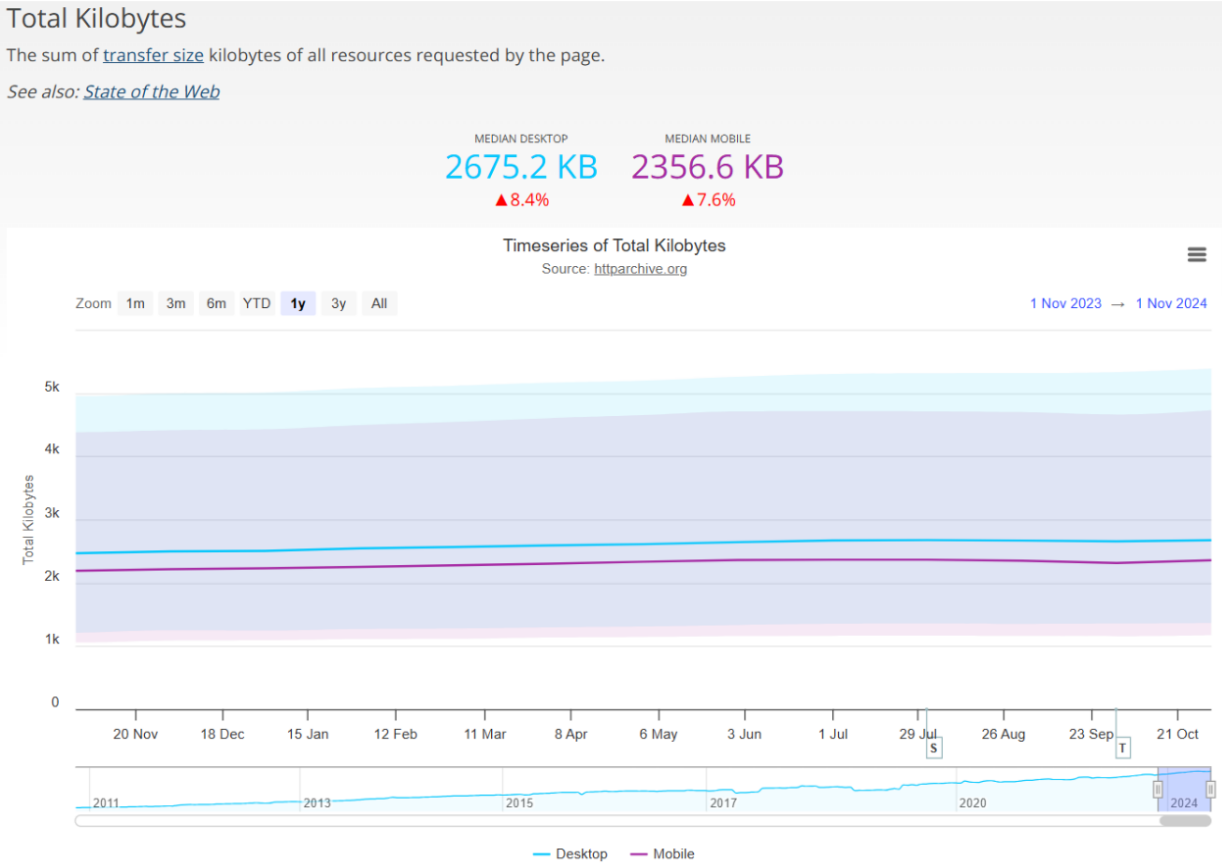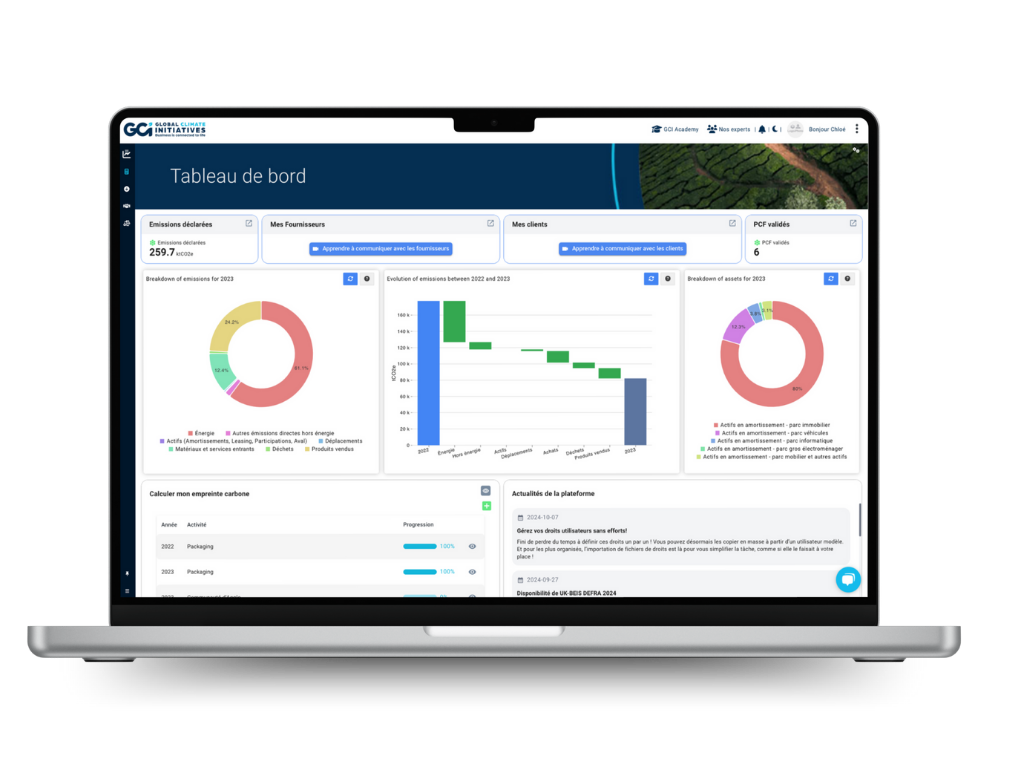Calcul du bilan GES d’un site web : pourquoi et comment les entreprises peuvent agir ?

Saviez-vous qu’un simple site web, pourtant outil clé du numérique, peut avoir un impact carbone considérable ? Alors que le numérique est souvent perçu comme “immatériel”, il représente déjà près de 4% des émissions mondiales de CO₂. Cette réalité, souvent sous-estimée, s’accentue avec la multiplication des sites et des usages digitaux.
Chaque site web, par son infrastructure, son trafic ou sa maintenance, consomme des ressources et produit des rejets de CO₂.
Le défi est clair : réduire l’empreinte carbone des activités numériques tout en répondant aux attentes des parties prenantes et en optimisant les performances. Pour y parvenir, il est essentiel de commencer par mesurer le bilan GES de son site web.
Pourquoi et comment les entreprises peuvent-elles agir pour limiter cet impact croissant ?
1.1. Comprendre son impact environnemental
1.2. Répondre aux attentes des parties prenantes
1.3. Optimiser les performances
2. Quels sont les principales catégories d’émissions d’un site web ?
2.4. Maintenance et mise à jour
3. Comment réduire le bilan GES d’un site web ?
Pourquoi calculer le bilan GES d’un site web ?
🌎 Comprendre son impact environnemental
Les centres de données (data centers), piliers de l’hébergement des sites web, sont de véritables consommateurs d’énergie, souvent alimentés par des sources non renouvelables. Leur forte demande en capacité en fait un enjeu majeur dans la réduction de l’empreinte carbone numérique.
Cette forte dépense en énergie provient de plusieurs sources :
- Les data centers représentent entre 1,5 % de la consommation d’énergie mondiale. Mais l’Agence Internationale de l’Énergie (AIE) avertit que cette part pourrait grimper à 10 % d’ici 2030 si aucune action significative n’est entreprise.
- Les réseaux nécessaires au transfert des données sont alimentés par des infrastructures énergivores
- Les terminaux des utilisateurs, comme les smartphones et les ordinateurs, utilisent eux aussi de l’électricité.
Un constat alarmant puisque la production des terminaux représente à elle seule entre 65 et 90 % de l’empreinte carbone du numérique en France.
C’est ce que révèlent les estimations du rapport conjoint de l’Arcep et de l’ADEME, réalisé à la demande du Ministère de la Transition écologique et du Ministère de l’Économie, des Finances et de la Relance. Cette donnée souligne l’urgence d’agir dès la phase de production pour réduire l’impact environnemental du numérique.
✅Répondre aux attentes des parties prenantes
Dans un contexte où la prise de conscience environnementale s’accélère, les clients et partenaires sont de plus en plus sensibles à l’impact numérique des entreprises et demandent des actions concrètes pour réduire l’impact environnemental. En effet, “9 consommateurs français sur 10 attendent des entreprises qu’elles répondent aux enjeux sociaux et environnementaux.” selon le Sénat.
De plus, s’engager dans une démarche RSE en réalisant le bilan GES d’un site web est une opportunité pour une entreprise de démontrer son engagement environnemental, tout en répondant aux exigences des parties prenantes et en gagnant en crédibilité auprès d’une audience sensibilisée.
Une étude conjointe entre Razorfish, l’agence numérique de Publicis, et le collectif GreenIT s’est intéressée à l’impact écologique des 90 sites internet les plus emblématiques de l’économie française, incluant ceux du CAC 40 (des grandes plateformes e-commerce, des médias et des services publics).
Les résultats sont sans équivoque et révèlent un impact alarmant :
🔺Chaque année, les sites Web français émettent 7 millions de kilos d’équivalent CO2 soit autant que 1007 tours du monde [1]
🔺 Ces portails numériques consomment 106 millions de litres d’eau, soit la consommation moyenne d’un Français pendant… 1983 années [2]
[1] En se basant sur une distance moyenne parcourue de 45 millions de km pour 7,6 millions keqCO₂ rejetés.
[2] En se basant sur une moyenne de 146 litres d’eau consommée par jour selon le volume d’eau potable consommé par habitant par jour en 2016 publié par Eau France en 2020.
📈 Optimiser les performances
Cette explosion du poids des interfaces numériques, multipliée par 155 entre 1995 et 2022 selon EcoIndex, illustre l’urgence de repenser la conception et la gestion d’un site.
Dans ce contexte, l’optimisation des sites web devient un levier essentiel, offrant des avantages non seulement pour l’environnement, mais également pour les performances économiques des entreprises :
- Réduction des coûts de stockage grâce à un volume de données plus faible.
- Amélioration de l’expérience utilisateur : une interface plus légère se charge plus rapidement, ce qui réduit le taux de rebond. À savoir que “le temps de chargement d’une page mobile est de 22 secondes en moyenne. Or, 1 visite sur 2 est abandonnée au-delà de 3 secondes de chargement sur un site mobile.”, selon une étude marketing menée par Google.
Corrélation entre le temps de transfert d’une interface numérique et le taux de rebond

- Meilleure performance SEO : Les moteurs de recherche privilégient les sites rapides et bien optimisés, augmentant leur visibilité et leur attractivité.
- Baisse de l’empreinte carbone : En réduisant le volume de votre interface numérique, vous limitez l’utilisation d’énergies non renouvelables, lesquelles sont liée aux systèmes informatiques et aux transferts d’informations, contribuant ainsi à un numérique plus durable.
Quelles sont les principales catégories d’émissions d’un site web ?
♨️ Hébergement et serveurs
Les data centers sont une source majeure du flux de carbone. En 2022, la consommation mondiale de ces hébergeurs a consommé 460 térawattheures (TWh) d’électricité, selon Franceinfo.
Les facteurs clés sont :
- Source d’énergie utilisée : Les data centers fonctionnant avec des énergies fossiles émettent bien plus que ceux utilisant des ressources renouvelables.
- Volume de données : Un site volumineux (nombre de pages, fichiers lourds) est particulièrement énergivore à stocker et à servir.
- Distance des systèmes informatiques : Les transferts sur de longues distances consomment davantage d’énergie.
💡 Structure et contenu
La manière dont un site web est conçu influence directement ses rejets carbonés.
- Fichiers volumineux : Images non compressées et vidéos en autoplay alourdissent les interfaces numériques.
- Code non optimisé : Un code inefficace sollicite davantage les systèmes informatiques, ralentit le site et accroît son empreinte carbone.
- Plugins inutiles : Les fonctionnalités non essentielles alourdissent le site.
📲 Trafic et utilisation
La consommation énergivore d’un site web est directement liée à son trafic et à la manière dont il est utilisé par les visiteurs. Chaque visiteur déclenche une chaîne d’actions (affichage d’une page, transfert d’informations) qui consomme de l’énergie. Plus les sessions sont longues et nombreuses, plus le site génère de rejets de CO₂.
- Nombre de visites et durée des sessions : Une augmentation de la fréquence et de la durée des sessions accroît significativement la consommation d’énergie.
- Localisation des utilisateurs : Des utilisateurs éloignés des systèmes informatiques augmentent les besoins en transfert de données.
📛 Maintenance et mises à jour
Même en arrière-plan, la maintenance d’un site web génère une dépense continue d’un point de vue énergétique :
- Mises à jour fréquentes : Elles sollicitent les systèmes informatiques de manière répétée.
- Backups inutiles : Les données obsolètes ou versions non nécessaires augmentent le stockage.
Optimiser ces éléments permet non seulement de réduire son empreinte carbone, mais aussi d’améliorer les performances globales
Comment réduire le bilan carbone d’un site web ?
Chaque clic, chaque visite, chaque fichier chargé sur un site web a un coût en énergie souvent invisible mais bien réel. Pourtant, des solutions existent pour réduire cet impact tout en améliorant les performances du site.
Voici les leviers concrets pour faire de votre site web un outil performant et éco-responsable :
💯Optimisation technique
- Compresser et optimiser les médias
L’optimisation des images est essentielle pour réduire le volume d’une interface numérique tout en économisant de la bande passante et améliorant le temps d’affichage. Le lazy loading (chargement paresseux) d’une page représente une solution complémentaire en retardant l’affichage des images jusqu’à ce qu’elles apparaissent à l’écran.
Cela permet :
- La réduction de l’énergie consommée pour le transfert de données.
- L’amélioration des performances des sites web pour l’utilisateur final.
D’après le graphique, plus de 35 % des pages utilisent déjà cette technique, en forte croissance sur l’année (+27 %) pour une période donnée [3]
Toutefois, pour maximiser ces gains, il est crucial d’aller plus loin en compressant.
[3] période : 1er novembre 2023 – 1er novembre 2024

- Alléger le code :
L’utilisation d’un code optimisé (HTML, CSS, JavaScript) peut réduire la taille totale d’une page. Cela diminue la dépense d’énergie nécessaire au traitement des requêtes sur les systèmes informatiques.
- Réduire le poids moyen d’une page web :
Aujourd’hui, la taille moyenne d’une interface numérique sur ordinateur de bureau atteint 2,6 Mo, marquant une hausse de 8 % par rapport à l’année précédente [4] . Cette inflation numérique n’est pas sans conséquence.
En optimisant leur site web, les entreprises disposent d’une réelle opportunité : réduire leur empreinte carbone tout en améliorant l’efficacité et la performance de leurs interfaces numériques.
[4] Evolution de la taille moyenne d’un site sur la période novembre 2023 à novembre 2024

♾️Choisir une plateforme cloud axée sur la durabilité
Les data centers ont une empreinte carbone très élevée, mais le choix d’un hébergeur vert peut faire la différence.
- Ressources renouvelables :
Privilégier un hébergement alimenté à 100 % par des énergies renouvelables afin de contribuer à la réduction des émissions de CO2e .
- L’enjeu géographique de proximité :
La distance entre le serveur et l’utilisateur final influe sur la consommation d’énergie liée au transfert des données. Réduire cette distance peut baisser l’empreinte carbone.
- Data centers certifiés
La certification ISO 14001 d’un datacenter atteste de son engagement à adopter des pratiques écoresponsables et à minimiser son impact environnemental. Cela implique l’instauration d’un système de gestion environnementale (SGE) rigoureux, visant notamment à réduire la consommation d’énergie, améliorer la gestion des déchets et optimiser l’utilisation des ressources.
💚Sensibilisation et engagement
- Former les équipes techniques pour intégrer l’éco-conception
Une équipe formée aux pratiques éthiques de développement web peut significativement réduire l’impact environnemental d’un projet numérique.
En adaptant leurs habitudes de travail (optimisation du code, compression des fichiers, design minimaliste), les développeurs peuvent diminuer l’empreinte d’un site web.
- Compenser les émissions résiduelles
Malgré les efforts d’optimisation, certaines dispersions restent inévitables. La compensation carbone permet de neutraliser cet impact en investissant dans des projets environnementaux tels que la reforestation, le financement d’énergies renouvelables ou la protection des écosystèmes. Cette démarche est à la fois responsable et accessible, avec un coût moyen d’un crédit carbone vendu de 4,6 € / tCO₂e.
Toutefois, pour obtenir un crédit labellisé bas carbone il faut compter 31,8 € / tCO₂e.
Ainsi, le numérique, qui représente aujourd’hui 4 % des émissions mondiales de CO₂e, est un levier clé de la transition bas carbone. Calculer le bilan GES de votre site web est une première étape essentielle pour réduire votre empreinte carbone tout en optimisant vos performances et votre image RSE.
Avec Global Climate Initiatives, bénéficiez d’un accompagnement sur-mesure :
- Mesurez l’impact de vos activités numériques avec un bilan GES conforme aux normes.
- Réduisez votre empreinte grâce à des solutions concrètes et efficaces.
- Compensez vos émissions résiduelles en soutenant des projets certifiés qui agissent durablement.
Ne restez pas spectateurs : devenez acteurs du changement. Ensemble, construisons un numérique à la hauteur des enjeux climatiques. 🌱
Agissez dès maintenant pour construire un avenir durable.


















